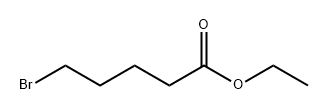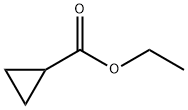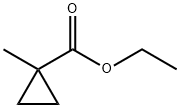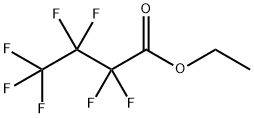Butyl ethyl ether
- CAS NO.:628-81-9
- Empirical Formula: C6H14O
- Molecular Weight: 102.17
- MDL number: MFCD00009455
- EINECS: 211-055-7
- SAFETY DATA SHEET (SDS)
- Update Date: 2024-08-27 20:28:20

What is Butyl ethyl ether?
Description
Ethyl butyl ether is a colorless liquid.Molecular weight = 102.21; Boiling point = 92℃;Freezing/Melting point = - 124℃; Flash point = 4℃.Hazard Identification (based on NFPA-704 M RatingSystem): Health 2, Flammability 3, Reactivity 0. Slightlysoluble in water.
Chemical properties
colourless liquid
Chemical properties
Ethyl butyl ether is a colorless liquid
The Uses of Butyl ethyl ether
Extraction solvent, inert reaction medium.
The Uses of Butyl ethyl ether
As an extraction solvent
Synthesis Reference(s)
The Journal of Organic Chemistry, 39, p. 3050, 1974 DOI: 10.1021/jo00934a027
General Description
A clear colorless liquid with an ethereal odor. Flash point 40°F. Less dense than water. Vapors heavier than air.
Air & Water Reactions
Highly flammable. Slightly soluble in water. Oxidizes readily in air to form unstable peroxides that may explode spontaneously [Bretherick 1979. p.151-154, 164]. A mixture of liquid air and diethyl ether exploded spontaneously [MCA Case History 616. 1960].
Reactivity Profile
Ethers, such as Butyl ethyl ether, can act as bases. They form salts with strong acids and addition complexes with Lewis acids. The complex between diethyl ether and boron trifluoride is an example. Ethers may react violently with strong oxidizing agents. In other reactions, which typically involve the breaking of the carbon-oxygen bond, ethers are relatively inert.
Hazard
Flammable, dangerous fire risk.
Health Hazard
Inhalation or contact with material may irritate or burn skin and eyes. Fire may produce irritating, corrosive and/or toxic gases. Vapors may cause dizziness or suffocation. Runoff from fire control may cause pollution.
Fire Hazard
HIGHLY FLAMMABLE: Will be easily ignited by heat, sparks or flames. Vapors may form explosive mixtures with air. Vapors may travel to source of ignition and flash back. Most vapors are heavier than air. They will spread along ground and collect in low or confined areas (sewers, basements, tanks). Vapor explosion hazard indoors, outdoors or in sewers. Runoff to sewer may create fire or explosion hazard. Containers may explode when heated. Many liquids are lighter than water.
Flammability and Explosibility
Flammable
Safety Profile
Moderately toxic by ingestion. A skin and eye irritant. A very dangerous fire hazard when exposed to heat or flame; can react vigorously with oxidizing materials. Keep away from heat and open flame. To fight fire, use alcohol foam, CO2, dry chemical. When heated to decomposition it emits acrid smoke and irritating fumes. See also ETHERS.
Potential Exposure
Used as a solvent for extraction and in making other chemicals
First aid
If this chemical gets into the eyes, remove anycontact lenses at once and irrigate immediately for at least15 min, occasionally lifting upper and lower lids. Seek medical attention immediately. If this chemical contacts theskin, remove contaminated clothing and wash immediatelywith soap and water. Seek medical attention immediately. Ifthis chemical has been inhaled, remove from exposure,begin rescue breathing (using universal precautions, including resuscitation mask) if breathing has stopped and CPR ifheart action has stopped. Transfer promptly to a medicalfacility. When this chemical has been swallowed, get medical attention. Give large quantities of water and inducevomiting. Do not make an unconscious person vomit
storage
Color Code—Red: Flammability Hazard: Store ina flammable liquid storage area or approved cabinet awayfrom ignition sources and corrosive and reactive materials.Prior to working with this chemical you should be trainedon its proper handling and storage. Store in tightly closedcontainers in a cool, well-ventilated area away from oxidizers, heat, and sources of ignition. Where possible, automatically pump liquid from drums or other storage containersto process containers. Drums must be equipped with selfclosing valves, pressure vacuum bungs, and flame arresters.Use only nonsparking tools and equipment, especially whenopening and closing containers of this chemical. Sources ofignition, such as smoking and open flames, are prohibitedwhere this chemical is used, handled, or stored in a mannerthat could create a potential fire or explosion hazard.Wherever this chemical is used, handled, manufactured, orstored, use explosion-proof electrical equipment andfittings.
Shipping
UN1179 Ethyl butyl ether, Hazard Class: 3; Labels: 3-Flammable liquid.
Purification Methods
Purify by drying with CaSO4, by passage through a column of activated alumina (to remove peroxides), followed by prolonged refluxing with Na and then fractional distillation. [Beilstein 4 IV 1518.]
Incompatibilities
May form explosive mixture with air. Heat or prolonged storage may cause the formation of unstable peroxides. Incompatible with oxidizers (chlorates, nitrates, peroxides, permanganates, perchlorates, chlorine, bromine, fluorine, etc.); contact may cause fires or explosions. Keep away from alkaline materials, strong bases, strong acids, oxoacids, and epoxides. Attacks some plastics, rubber and coatings. May accumulate static electrical charges, and may cause ignition of its vapors.
Waste Disposal
Dissolve or mix the material with a combustible solvent and burn in a chemical incinerator equipped with an afterburner and scrubber. All federal, state, and local environmental regulations must be observed. Consult with environmental regulatory agencies for guidance on acceptable disposal practices. Generators of waste containing this contaminant (≥100 kg/mo) must conform with EPA regulations governing storage, transportation, treatment, and waste disposal.
Properties of Butyl ethyl ether
| Melting point: | -124 °C |
| Boiling point: | 91-92 °C(lit.) |
| Density | 0.75 g/mL at 25 °C(lit.) |
| vapor pressure | 52 mm Hg ( 25 °C) |
| refractive index | n |
| Flash point: | 22 °F |
| storage temp. | Flammables area |
| solubility | 3.8g/l |
| form | clear liquid |
| color | Colorless to Almost colorless |
| Specific Gravity | 0.750.7522 (20/20℃) |
| explosive limit | 0.8-18.5%(V) |
| Water Solubility | Slightly soluble in water |
| BRN | 1731323 |
| Stability: | Stable, but may form peroxides in storage if in contact with air. Highly flammable. Incompatible with oxidizing agents. |
| CAS DataBase Reference | 628-81-9(CAS DataBase Reference) |
| EPA Substance Registry System | Butane, 1-ethoxy- (628-81-9) |
Safety information for Butyl ethyl ether
| Signal word | Danger |
| Pictogram(s) |
 Flame Flammables GHS02  Exclamation Mark Irritant GHS07 |
| GHS Hazard Statements |
H225:Flammable liquids H302:Acute toxicity,oral |
| Precautionary Statement Codes |
P210:Keep away from heat/sparks/open flames/hot surfaces. — No smoking. P233:Keep container tightly closed. P240:Ground/bond container and receiving equipment. P241:Use explosion-proof electrical/ventilating/lighting/…/equipment. P242:Use only non-sparking tools. P301+P312:IF SWALLOWED: call a POISON CENTER or doctor/physician IF you feel unwell. |
Computed Descriptors for Butyl ethyl ether
New Products
4-Aminotetrahydropyran-4-carbonitrile Hydrochloride (R)-3-Aminobutanenitrile Hydrochloride 4-AMINO-TETRAHYDRO-PYRAN-4-CARBOXYLIC ACID HCL 4-(Dimethylamino)tetrahydro-2H-pyran-4-carbonitrile 3-((Dimethylamino)methyl)-5-methylhexan-2-one oxalate 1,4-Dioxa-8-azaspiro[4.5]decane 5-Bromo-2-nitropyridine Nimesulide BP Aceclofenac IP/BP/EP Mefenamic Acid IP/BP/EP/USP Diclofenac Sodium IP/BP/EP/USP Ornidazole IP Diclofenac Potassium SODIUM AAS SOLUTION ZINC AAS SOLUTION BUFFER SOLUTION PH 10.0(BORATE) GOOCH CRUCIBLE SINTERED AQUANIL 5 BERYLLIUM AAS SOLUTION 2-Bromo-1-(bromomethyl)-3-chloro-5-nitrobenzene 2-Bromo-3-nitroaniline N-(3-Hydroxypropyl)-N-methylacetamide 3-Bromo-6-chloropyridazine 4-ethyl-3-nitrobenzoic acidRelated products of tetrahydrofuran








You may like
-
 Butyl Ethyl Ether CAS 628-81-9View Details
Butyl Ethyl Ether CAS 628-81-9View Details
628-81-9 -
 Butyl ethyl ether CAS 628-81-9View Details
Butyl ethyl ether CAS 628-81-9View Details
628-81-9 -
 1823368-42-8 98%View Details
1823368-42-8 98%View Details
1823368-42-8 -
 2-(3-(tert-butyl)phenoxy)-2-methylpropanoic acid 1307449-08-6 98%View Details
2-(3-(tert-butyl)phenoxy)-2-methylpropanoic acid 1307449-08-6 98%View Details
1307449-08-6 -
 Ethyl 3-(furan-2-yl)-3-hydroxypropanoate 25408-95-1 98%View Details
Ethyl 3-(furan-2-yl)-3-hydroxypropanoate 25408-95-1 98%View Details
25408-95-1 -
 2-Chloro-5-fluoro-1-methoxy-3-methylbenzene 98%View Details
2-Chloro-5-fluoro-1-methoxy-3-methylbenzene 98%View Details
1805639-70-6 -
 1784294-80-9 98%View Details
1784294-80-9 98%View Details
1784294-80-9 -
 Lithium ClavulanateView Details
Lithium ClavulanateView Details
61177-44-4